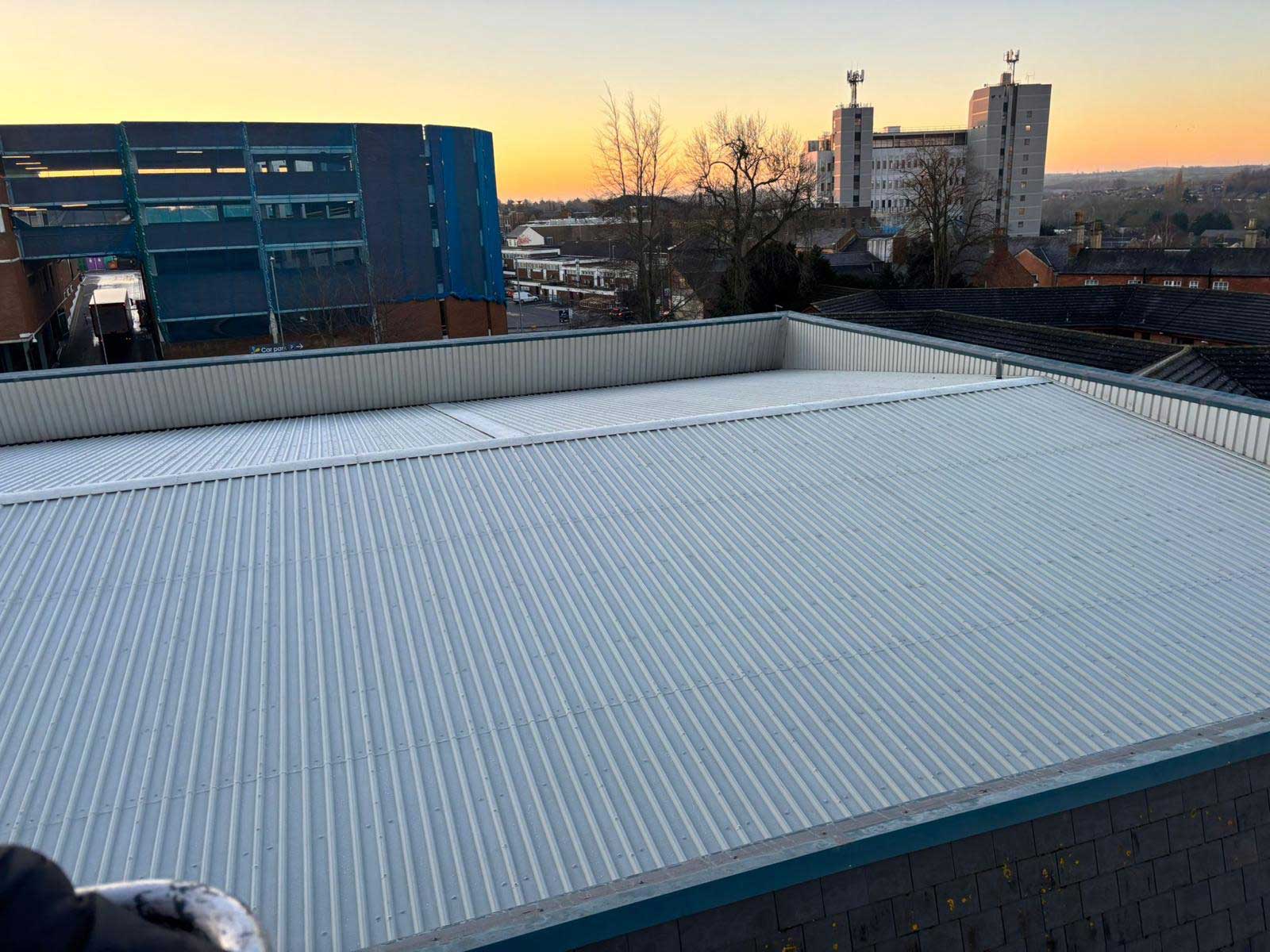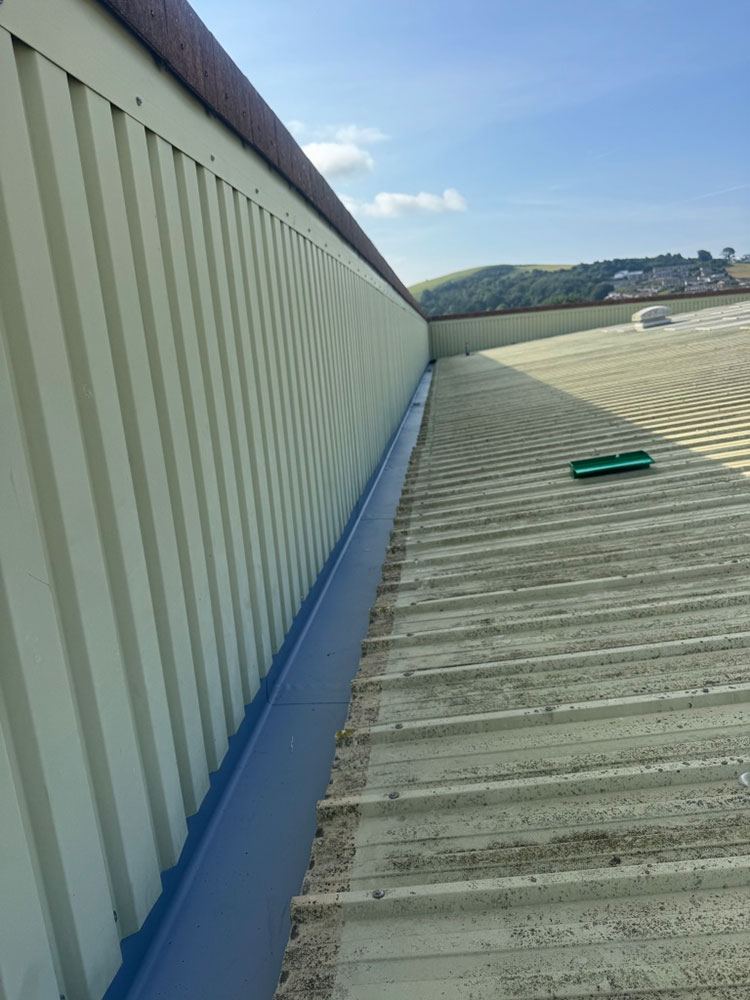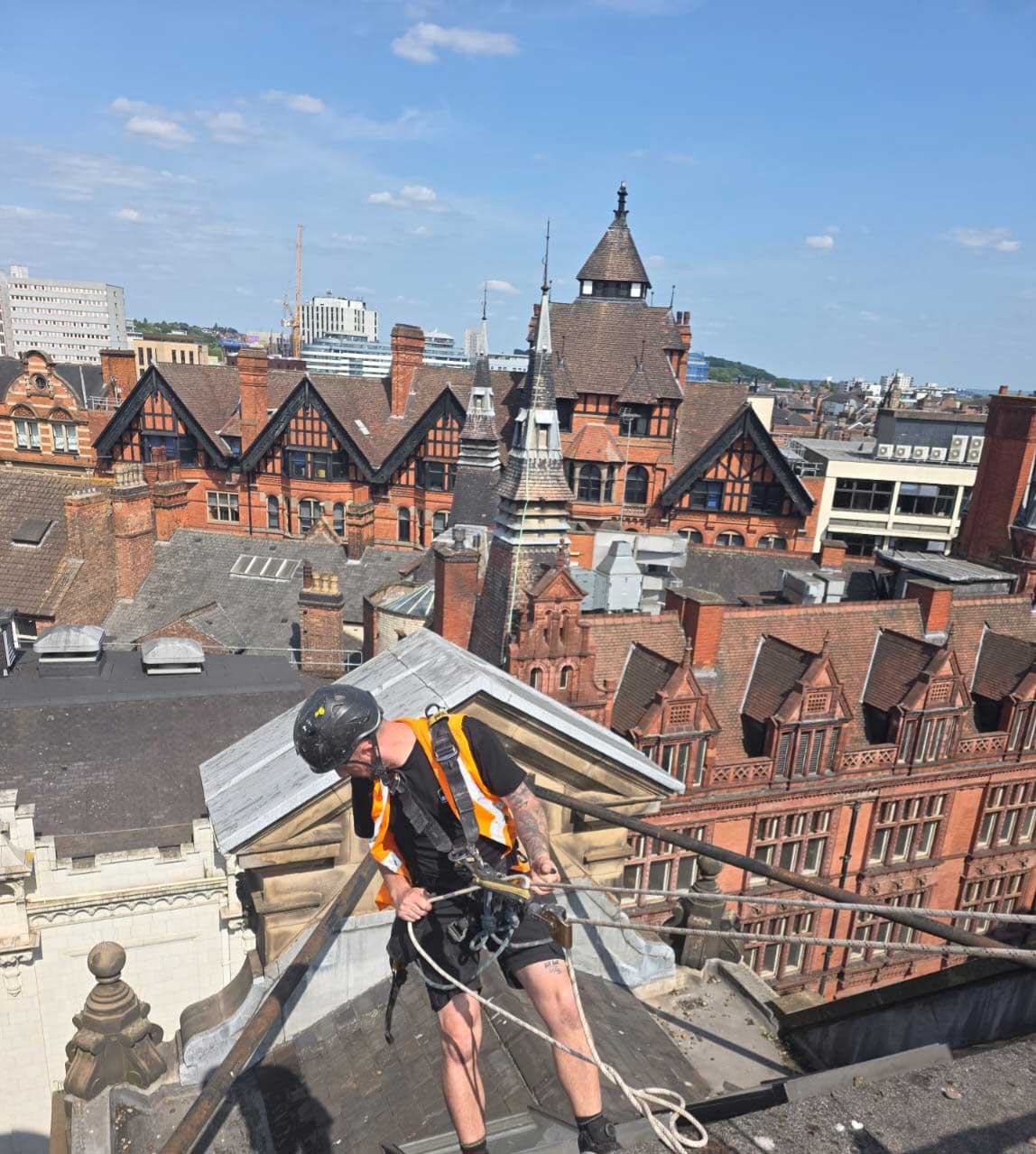
As a business owner or property manager, your commercial building’s roof is one of your most critical yet often overlooked assets. A well-maintained roof protects your inventory, equipment, employees, and customers from the elements. However, even the most durable commercial roofs eventually wear out and need replacement. Knowing when to replace rather than repair can save you thousands of dollars in potential damage and business interruption.
Signs Your Commercial Roof Is Failing
Age-Related Deterioration
The age of your roof is perhaps the most reliable indicator of when replacement becomes necessary:
- EPDM (rubber) roofs: Typically last 15-25 years
- TPO or PVC single-ply membranes: Generally good for 20-30 years
- Modified bitumen: Usually lasts 15-20 years
- Built-up roofing (BUR): Can last 15-30 years depending on materials
- Metal roofing: Often lasts 30-45+ years
If your roof is approaching or has exceeded these timeframes, it’s wise to start planning for replacement, even if no obvious issues are present.
Recurring Leaks and Water Damage
While occasional leaks might be repairable, persistent or widespread leaking indicates a systemic failure that often requires full replacement:
- Water stains on interior ceilings or walls
- Multiple leak locations throughout the building
- Leaks that return shortly after repairs
- Moisture detection in roof insulation during professional inspection
Water intrusion isn’t just inconvenient—it can lead to mold growth, compromised structural integrity, damaged inventory, and increased energy costs.
Visible Membrane Damage
Regular roof inspections may reveal physical deterioration that signals the end of your roof’s useful life:
- Extensive blistering, cracking, or splitting of the membrane
- Large areas of brittle or shrinking material
- Loose or separated seams
- Widespread surface erosion or loss of protective coating
- Ponding water that remains 48+ hours after rainfall
When these issues affect more than 25% of your roof surface, replacement often becomes more economical than ongoing repairs.
Energy Efficiency Problems
A failing roof can significantly impact your building’s temperature regulation and energy costs:
- Unexplained increases in heating or cooling expenses
- Difficulty maintaining consistent indoor temperatures
- Damaged or compressed insulation detected during inspection
- Noticeable heat loss in winter or heat gain in summer
Modern commercial roofing systems offer substantially improved energy efficiency compared to older installations, potentially offsetting replacement costs through energy savings.
Sagging or Structural Issues
Perhaps the most alarming sign that replacement can’t wait:
- Visible sagging or depressions in the roof surface
- Bowing or deflection of support structures
- Interior ceiling tiles pushing down or warping
- Drainage problems causing water accumulation and added weight
These symptoms indicate potential structural compromise that could lead to catastrophic failure if not addressed promptly.
Making the Repair vs. Replace Decision
Consider These Factors:
- Cost comparison: When repair costs exceed 30% of replacement costs, full replacement typically offers better long-term value.
- Building occupancy plans: If you plan to occupy the building for 5+ more years, replacement often makes more economic sense than continuing repairs.
- Local building codes: Code updates may require bringing the entire roof system up to current standards during significant repairs anyway.
- Insurance considerations: Many insurers offer premium discounts for buildings with newer, code-compliant roofing systems.
- Business interruption risk: While replacement represents a larger initial investment, it dramatically reduces the risk of unexpected failures that could disrupt operations.
Professional Assessment Is Critical
While this guide provides valuable warning signs, nothing replaces a comprehensive inspection by a qualified commercial roofing professional. They can:
- Perform infrared moisture scanning to detect hidden water intrusion
- Evaluate the condition of underlying insulation and structure
- Provide core samples to assess all roof system layers
- Help navigate building code requirements
- Recommend appropriate replacement options
Benefits of Timely Roof Replacement
Being proactive about replacing an aging commercial roof offers several advantages:
- Scheduled convenience: Planned replacement allows you to choose timing that minimizes business disruption
- Warranty protection: New roofing systems typically include 15-30 year warranties
- Energy savings: Modern roofing materials can reduce HVAC costs by 15-30%
- Enhanced property value: A new roof typically returns 50-70% of its cost in increased building value
- Improved safety: Eliminates liability risks associated with failing roof systems
Conclusion
Your commercial roof represents a significant investment, but it’s also a finite one. Knowing when to make the transition from repair to replacement can help you maximize that investment while protecting your business operations. By recognizing the warning signs of roof failure and working with qualified professionals, you can make informed decisions that keep your building secure and your business running smoothly for years to come.
When your commercial roof starts showing multiple signs of failure outlined above, it’s time to consult with commercial roofing specialists who can provide detailed assessments and replacement options tailored to your specific building and business needs.









